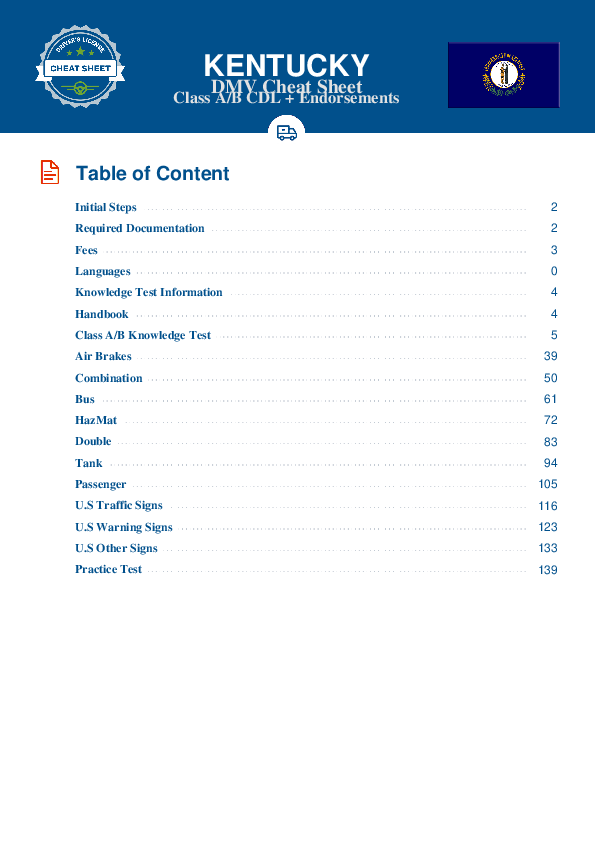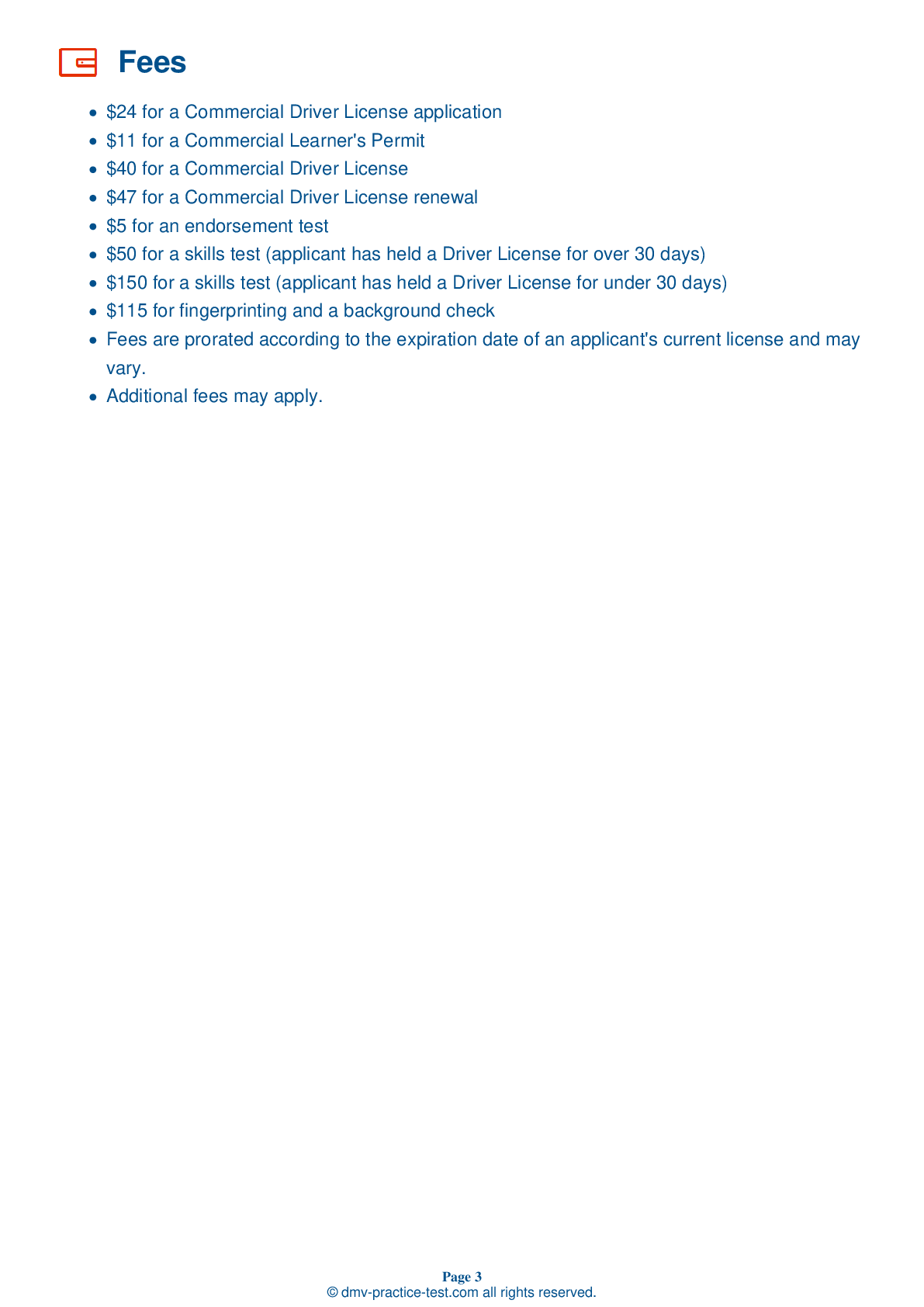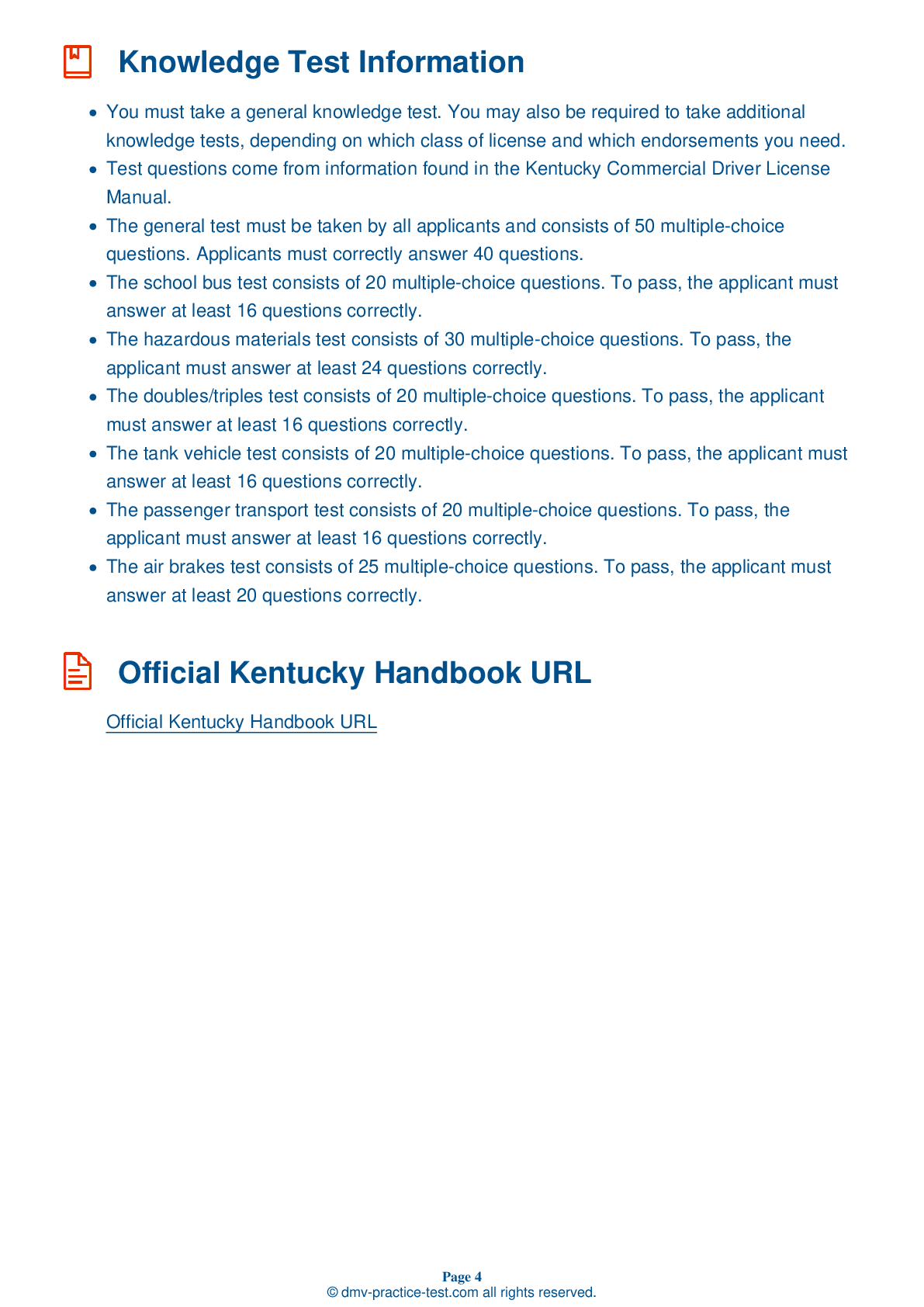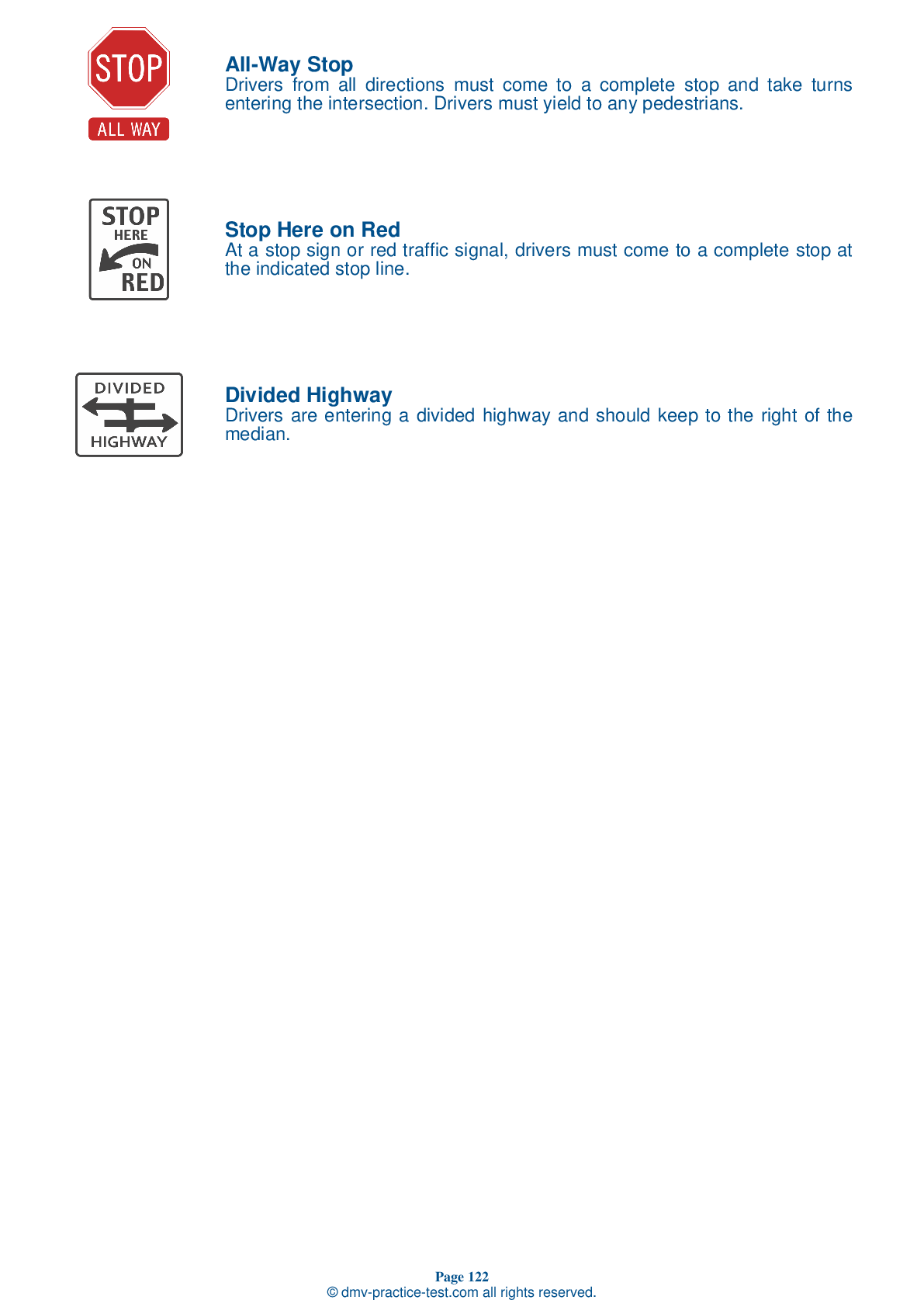Combination #1
Combination Vehicles Practice Test | Kentucky 2025 #1 Page 2 of 3
Train for FREE online with our Kentucky CDL combination vehicle test. The official exam test consists of several obligatory parts, with all of them checking your knowledge of different blocks of road rules. If you need to obtain a KY combination license in 2025, practice as much as possible. Free sample tests published on our website will help you check and improve your knowledge and boost your grades. Please bear in mind that DMV requirements for issuing a combination license may vary from state to state.
20
16
20
8 . Watching the road ahead:
Making a sudden lane change can be dangerous while driving a combination vehicle. You can avoid the need to make a sudden lange change by looking down the road for upcoming obstacles that will require you to change lanes.
9 . All trailers made after ____ must be equipped with Anti-Lock Braking Systems (ABS).
All trailers and converter dollies manufactured on or after March 1, 1998 must have Anti-Lock Braking Systems (ABS).
10 . When driving while pulling trailers, you should:
You should always steer gently and smoothly while pulling a trailer. Making sudden steering moves could cause the trailer to tip over.
11 . Trailers with low underneath clearance can present challenges when driving over:
Railroad-highway crossings may be difficult to cross when pulling a trailer with a low underneath clearance. In particular, both low-slung units and single-axle tractors pulling long trailers are especially challenging to drive over raised crossings.
12 . If you are backing and the trailer begins to drift off-course, the driver should:
If your trailer begins to drift while you are backing, you should correct the drift immediately by turning the top of the steering wheel in the direction of the drift.
13 . Keeping cargo low can:
Rollovers can happen when a combination vehicle is turned too quickly. To help prevent the risk of rollover, it is important to keep the vehicle's center of gravity low by loading cargo as close to the ground as possible.
14 . Maintain a following distance of at least ____ for every 10 feet of your vehicle if you are traveling at a speed under 40 mph.
At speeds below 40 mph, you should allow at least one second of following distance for every 10 feet of your vehicle. Follow the same formula when traveling at faster speeds, then add one additional second to your following distance. Remember that larger vehicles require more space to stop than smaller vehicles.
2025 Kentucky | Frequently Asked Questions
In Kentucky, a Commercial Driver's License (CDL) Class B allows holders to operate single vehicles with a gross vehicle weight rating (GVWR) of 26,001 pounds or more, or any such vehicle towing another not exceeding 10,000 pounds. This class typically includes straight trucks, large buses, segmented buses, and dump trucks with small trailers.
A Class B CDL license in Kentucky allows the holder to operate single vehicles with a gross vehicle weight rating of 26,001 pounds or more, or tow a vehicle not exceeding 10,000 pounds. This includes straight trucks, large buses, segmented buses, dump trucks with small trailers, and farm labor vehicles.
To acquire a Class B CDL license in Kentucky, you must be at least 18 years old (21 for interstate driving), have a valid Kentucky driver's license, pass a vision test, and complete a commercial driver’s license application. You'll also need to pass the General Knowledge test and any other knowledge tests for the specific vehicle type, plus a driving skills test.
In Kentucky, you must be at least 18 years old to obtain a Class B Commercial Driver's License (CDL) for intrastate driving (within Kentucky only). However, federal regulations require that you be at least 21 years old to drive a commercial vehicle across state lines, carry hazardous materials, or transport passengers.
While specific endorsements aren't necessary for a Class B CDL, they can provide additional driving privileges. Endorsements in Kentucky include H (Hazardous Materials), N (Tank Vehicles), P (Passenger Vehicles), S (School Buses), and T (Double/Triple Trailers). Each endorsement requires passing a knowledge test, and some require a skills test.
The Class B CDL skills assessment in Kentucky includes three parts: a pre-trip vehicle inspection, a basic vehicle control test, and an on-road driving exam. These tests assess your ability to inspect your vehicle before the trip, control the vehicle in various situations like backing, and drive safely in typical traffic situations respectively.
Class B CDL license holders in Kentucky are primarily limited to operating vehicles with a Gross Vehicle Weight Rating (GVWR) of more than 26,000 pounds or vehicles towing another vehicle not exceeding 10,000 pounds. They can't operate Class A vehicles (tractor-trailers) without the appropriate license. Also, without specific endorsements, they can't transport hazardous materials, large numbers of passengers, or school children.
In Kentucky, the written Class B CDL test is primarily offered in English. However, Kentucky does provide the test in Spanish as well. It's important to note though, federal regulations require all CDL holders to have a basic understanding of English to communicate with officials and for safety reasons.
Yes, test accommodations are available in Kentucky for the Class B CDL written exam if you have a disability. You can request accommodations such as extra time, a quiet room, or a reader. To request these, you'll need to provide appropriate documentation of your disability to the Kentucky Division of Driver Licensing.
Yes, if you fail the Class B CDL written test in Kentucky, you can retake it. However, you must wait a minimum of one day before retesting. There is no limit to the number of times you can retake the test, but keep in mind that each attempt requires a new testing fee.



